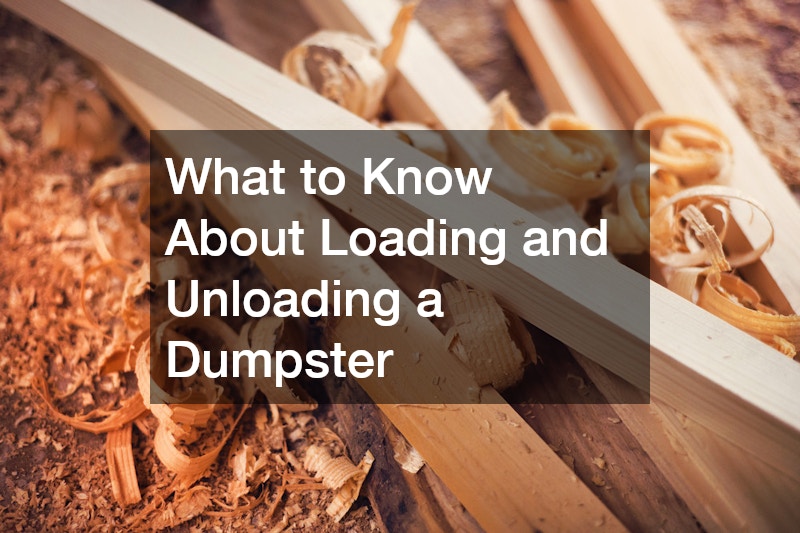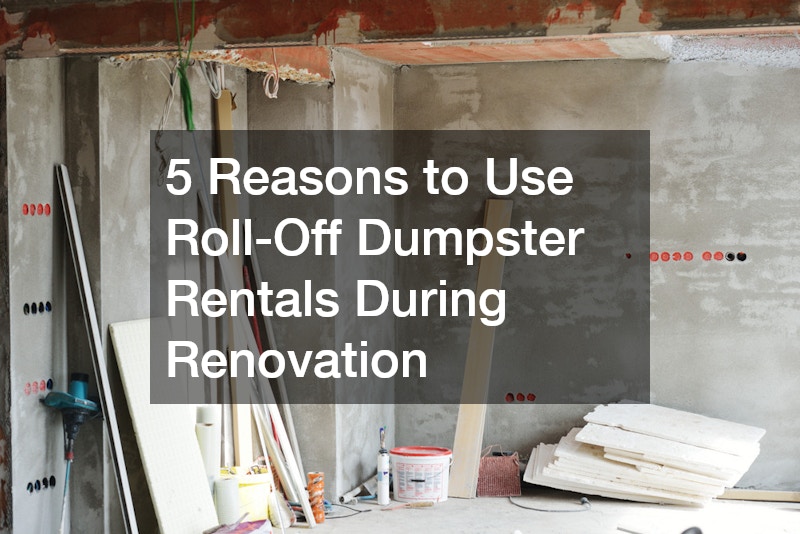When tackling a major cleanup, renovation, or construction project, one of the most important considerations is how to properly handle waste removal. Renting a dumpster provides a convenient way to manage large amounts of debris, but using it correctly is essential to ensure safety, efficiency, and compliance with local regulations. A dumpster is not just a container for trash; it is a tool that requires careful preparation, proper usage, and thoughtful planning.
Knowing how to load and unload one correctly can prevent injuries, avoid extra fees, and help keep a project on track.
Many people underestimate the process of handling a dumpster, assuming it is as simple as tossing items in until it is full. However, there are several best practices that make a big difference in how smoothly the process goes. From preparing the area where the dumpster will sit to making sure waste is distributed evenly, these steps reduce risks and increase efficiency. By learning what to do before, during, and after use, anyone can make the most of their rental and ensure their project runs as smoothly as possible.
Preparing the Area Before Dumpster Delivery
Before a dumpster arrives, it is important to take time to prepare the site where it will be placed. A clear, flat, and sturdy surface ensures that the container remains stable and accessible throughout the rental period. Choosing the right location is essential, as the delivery truck will need enough space to maneuver safely. Preparing in advance also helps prevent damage to driveways, yards, or surrounding property that may occur if the container is dropped in the wrong spot.
Preparing the site involves choosing a space that is clear of overhanging wires, tree branches, or other obstacles that could interfere with the delivery truck. Placing plywood or boards under the dumpster helps protect paved surfaces from scratches or cracks. It is also important to think about how easily people will be able to walk or drive around once the container is in place. Taking these steps ahead of time ensures delivery and pickup go much more smoothly.
Following Safe Loading Practices
Safety should always be a top priority when loading a dumpster. Items should be lifted carefully to avoid strain or injury, and heavier debris should be placed in first so the load remains stable. Overloading the container or piling items too high can create hazards during use or when the dumpster is removed. Adopting safe loading practices not only protects those working on the project but also helps ensure compliance with rental guidelines and local safety regulations.
Heavier materials such as bricks, concrete, or large furniture pieces should always go at the bottom of the dumpster. Lighter debris can then be layered on top to balance the load and prevent shifting. Sharp or hazardous materials should be handled with gloves and placed in ways that reduce the risk of injury when adding additional items. Keeping these practices in mind makes the process much safer for everyone involved.
Distributing Weight Evenly in the Dumpster
One of the most overlooked aspects of using a dumpster is how important it is to distribute weight evenly. Unevenly loaded containers can tip over, cause delivery trucks to struggle during pickup, or result in unsafe handling conditions. Taking the time to arrange items in an organized way ensures that the container remains balanced and secure. This step can also help maximize available space, making it possible to fit more debris without overfilling.
Heavy items should be spread across the bottom rather than stacked on one side. Long or flat objects, such as boards or panels, are best positioned to keep the load even and reduce empty spaces where other debris could settle unevenly. Smaller pieces of trash can be used to fill gaps and improve stability. When items are distributed evenly, the dumpster is much safer to use and easier for removal crews to handle.
Avoiding Prohibited and Hazardous Materials
Not everything can or should go into a dumpster. Certain materials are prohibited because they pose environmental, health, or safety risks. Items such as chemicals, paints, batteries, and tires often require special disposal methods. Understanding what cannot be placed in a dumpster helps avoid fines, extra fees, and potential harm to workers or the community.
Renters should carefully review disposal guidelines and separate materials that need to go elsewhere. Electronics may require recycling centers, while hazardous waste like oil or gasoline must be taken to designated facilities. Even common household items, such as old appliances, might call for special arrangements to ensure safe disposal. Following these rules makes waste management more responsible and less stressful.
Managing the Dumpster During Pickup and Removal
The final stage of using a dumpster is preparing it for pickup and removal. This step is just as important as the loading process, as it determines whether the rental company can safely transport the container away. Ensuring the load is level, the container is accessible, and the surrounding area is clear makes pickup faster and easier. Proper preparation also reduces the risk of delays or added charges.
Before pickup, it is important to double-check that no debris is sticking out of the top or sides of the dumpster, since this can make transport unsafe. The path for the truck should remain clear of vehicles, equipment, or other obstacles that could block access. If protective boards were used under the container, they should be removed once the dumpster is taken away. Paying attention to these details ensures the final stage of the process goes as smoothly as it began.
Loading and unloading a dumpster may seem straightforward, but careful planning and attention to detail make all the difference. From choosing the right location before delivery to ensuring the container is properly balanced and free of hazardous items, each step plays a role in safety and efficiency. A dumpster is a valuable resource for managing large amounts of waste, but it works best when handled responsibly.



